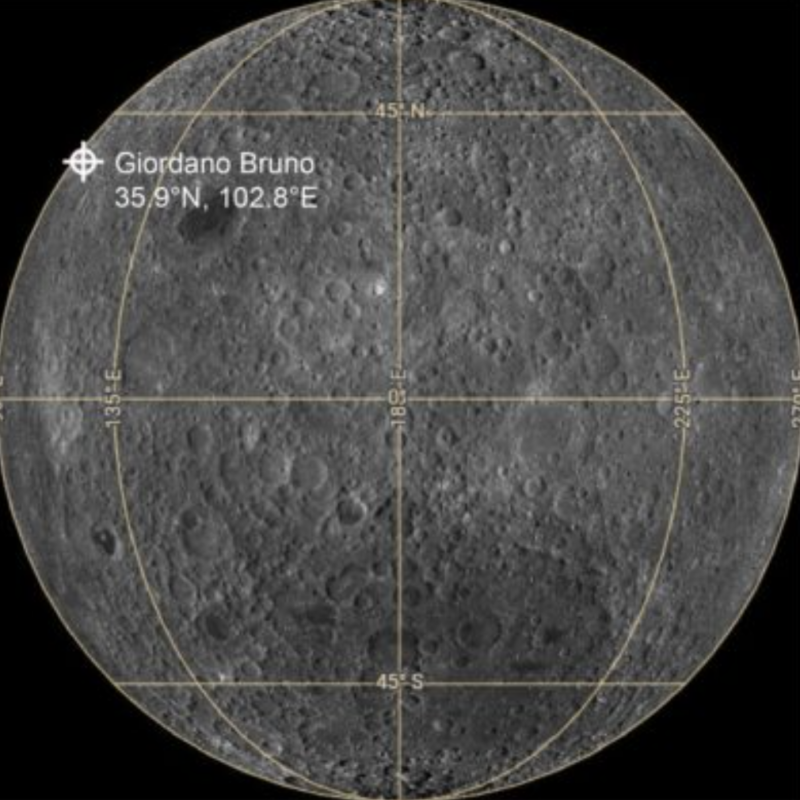Something knocked a chunk off the lunar surface
For a while, starting in the year 2016, it looked as if Earth might have a second, much-smaller moon. But, after preliminary studies of the object’s orbit, astronomers labeled 469219 Kamo’oalewa as a near-Earth asteroid (NEA) and a quasi-satellite to Earth.
So we know that, like our moon, Kamo’oalewa stays close to Earth over many orbital periods, in this case for centuries to come. Kamo’oalewa appears as if it circles the Earth. But it doesn’t, although its orbit around the sun is synchronized with Earth’s orbit.
But the moon does figure into Kamo’oalewa’s story. In 2021, astronomers using spectroscopy revealed that Kamo’oalwea might in fact be a piece of the moon. The asteroid and the moon are apparently made of identical stuff: space-weathered silicates.
Now there’s more.
Last Friday (April 19, 2024), another group of astronomers published data in Nature Astronomy supporting a lunar origin for Kamo’oalwea. They also believe they know the impact crater that formed when Kamo’oalewa was blasted from the moon’s surface.
They think they’ve found the scar left by the impact that sent Kamo’oalewa hurtling into space. The far side crater Giordano Bruno – named for the 16th century Italian philosopher, poet, cosmological theorist and esotericist – seems to be the “likely” source, they said.

Support astronomy education and our work by donating today. Our organization couldn’t exist without your help!
Rounding up the unusual suspects
In reporting the new evidence, Phys.org described the detective work that led an international team of scientists to the suspect crater:
The team began by creating a computer model to mimic the type of collision that could have resulted in a piece of the moon’s surface the size of Kamo’oalewa being flung into space. In so doing they were able to estimate the likely size of the asteroid that would have struck the moon, and from that, the size of the crater it would have left behind.
Knowing how large the impactor was, and that the impact had to be fairly recent, the team came up with a short list of possible suspects for craters that might match Kamo’oalwea’s origin. As it turned out, one crater had its fingerprints all over the asteroid. From Phys.org:
They then compared samples of moon material brought back to Earth that had been found near one prime possibility – the Giordano Bruno crater. They found spectral similarities between the samples and the asteroid Kamo’oalewa – they also found both had bits of the mineral pyroxene in them as well.
Bingo. Case closed. Or is it?

Space missions will continue investigating asteroid Kamo’oalewa
While it the mystery of Kamo’oalewa’s origin appears solved, a pair of upcoming space probes will test the team’s hypothesis.
First, launching in 2025, the Chinese Tianwen-2 mission will collect a sample of Kamo’oalewa and return it to Earth. According to the Planetary Society:
The spacecraft will rendezvous with asteroid Kamo’oalewa and carry out remote sensing, assessing the planetary body for potential landing sites. It will then attempt to collect samples from the small body using two different techniques — touch-and-go and anchor-and-attach — and return to Earth to deliver the samples for analysis. Altogether, this will take around 2.5 years.
A second mission – NASA’s NEO Surveyor space telescope launching in 2027 – should provide more useful data about the orbit of Kamo’oalwea. The NASA mission, however, isn’t about finding the origin of near-Earth objects (NEO). NEO Surveyor hopes to find potentially hazardous asteroids and comets before they find us.
From the NEO Surveyor website:
After launch, NEO Surveyor will carry out a five-year baseline survey to find at least two-thirds of the near-Earth objects larger than 140 meters (460 feet). These are the objects large enough to cause major regional damage in the event of an Earth impact. By using two heat-sensitive infrared imaging channels, NEO Surveyor can make accurate measurements of NEO sizes and gain valuable information about their composition, shapes, rotational states, and orbits.
Bottom line: A group of astronomers say their data point to a lunar origin for the near-Earth asteroid Kamo’oalewa.
Source: Asteroid Kamo‘oalewa’s journey from the lunar Giordano Bruno crater to Earth 1:1 resonance
Via Phys.org
Read more: Piece of the moon? Asteroid might have lunar origin